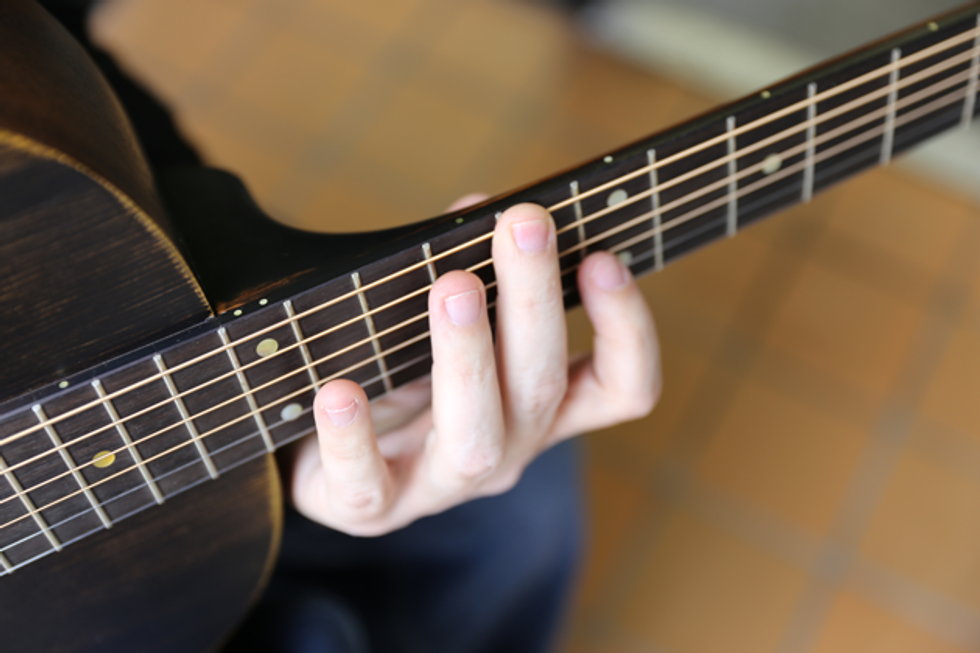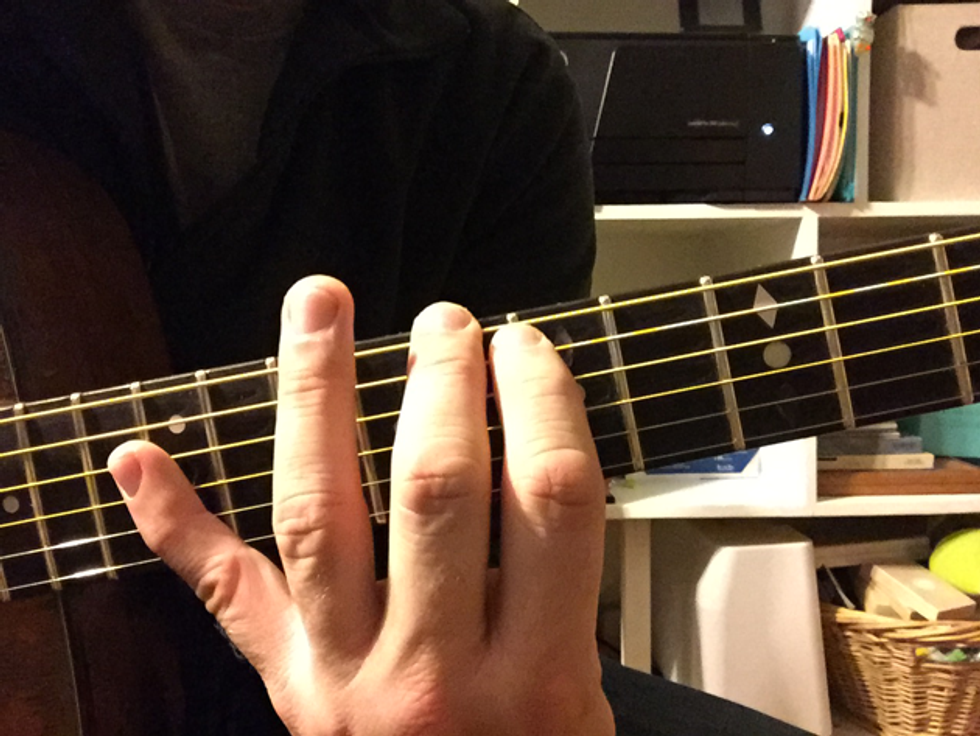Chops: Intermediate
Theory: Beginner
Lesson Overview:
• Understand the fundamentals of natural harmonics.
• Outline pentatonic melodies using harmonics.
• Sharpen your crosspicking technique.
Click here to download a printable PDF of this lesson's notation.
As the leader of a guitar-based instrumental trio, I’m constantly trying to stretch the limits and find new sounds to make with the instrument. Fortunately, we have many wonderful techniques at our fingertips, from plucking and picking, strumming chords, or even drumming on the body, and I try to make use of them all. One of my favorite techniques is using the guitar’s natural harmonics to create a melody. Many guitarists use this approach, but I can’t think of anyone who is better known for it than the late Lenny Breau. He could play cascades of harmonics up and down the neck and make it seem effortless. Thanks to the magic of the internet, we’re able to hear Lenny describe and demonstrate this technique in the video below.
There are two types of harmonics—natural and artificial. (Breau’s command of the latter sets him apart from most guitarists.) In this lesson, we’ll look at natural harmonics—the logical starting point for exploring this technique.
You can produce a natural harmonic by lightly touching a string with a fretting finger that’s strategically placed over a specific fret. The note is slightly muted and rings out as a harmonic. There are natural harmonics exactly above or near the 3rd, 4th, 5th, and 9th frets, but today we’ll focus primarily on the 7th and 12th because of their melodic characteristics and accessibility. Place your first finger over the 7th fret and your fourth over the 12th fret. In Photo 1 you can see how I position my hand to make the reach. (My guitar teacher always told me not to flatten out my fingers, but in this case it helps.) Remember, you’re not pressing the string against the fret, but rather laying your fingertip on the string directly over the fret, and then plucking the string with the other hand. Also, keep your thumb in the center of the neck ... just imagine you’re holding a grilled cheese sandwich.
Loosely based around the G major pentatonic scale (G–A–B–D–E), Ex. 1 is a simple exercise that will help you get a handle on the basics of this technique.
Click here for Ex. 1
We can use the notes in the pentatonic scale to create beautiful melodies. For example, try playing “Amazing Grace” using these harmonics. Pick it out by ear, starting with the 12th-fret harmonic on the 4th, 3rd, and 2nd strings. You may find that picking out melodies is slightly counterintuitive because the 12th fret harmonic is actually a lower pitch than the 7th fret, but if you spend enough time in this position, you’ll eventually memorize where the pitches are located. Ex. 2 is the melody to “Saje” from my self-titled album.
Click here for Ex. 2
We now have the harmonics that will serve as the melody notes under our fingers. The thing is, I want what I’m playing to sound like a song—not just a melody—so I need to add some notes in that correspond to the roots of the chord progression happening behind the melody (Ex. 3). With this in mind, I play a fretted C note on the 8th fret of the 6th string and then the open 6th string to suggest a C–Em progression. This gives the melody some context. Listen carefully to the audio and let every note ring out as long as possible. Note: I’m using a flatpick and attacking each note individually with alternate picking.
Click here for Ex. 3
Now that we have the basic melody down, we can play around with it a little. For example, I like to crosspick through the harmonics while still outlining the chords to give the melody a rolling, cascading sound. Ex. 4 illustrates one way to incorporate some crosspicking into this melody. This pattern also strikes the chord root more often, adding drive to the tune. In this case, the fourth finger rests on both strings at the 12th fret.
Click here for Ex. 4
Now that we’ve flatpicked for a while, let’s try a fingerstyle approach. Plucking harmonics with your fingers creates a much softer sound, and allows you to simultaneously play several notes. Ex. 5 is part of a song I wrote called “Pamlico Sound” from our latest album, Lost at Last. In this example, the thumb plucks the root notes of G, D, C, and E, while the index, middle, and ring fingers play the harmonic melody.
Click here for Ex. 5
It’s fun to mix in some traditional fingerpicking patterns with the 7th- and 12th-fret harmonics and fretted bass notes. Ex. 6 uses a traditional folk fingerstyle pattern, not unlike Mississippi John Hurt’s “Make Me a Pallet on Your Floor.” The thumb alternates between the 6th and 4th strings.
Click here for Ex. 6
Well, that should get you started. Hopefully you’ll have as much fun playing with these natural harmonics as I do. They are a truly beautiful aspect of the guitar that can add a level of sensitivity to your playing.












![Rig Rundown: Russian Circles’ Mike Sullivan [2025]](https://www.premierguitar.com/media-library/youtube.jpg?id=62303631&width=1245&height=700&quality=70&coordinates=0%2C0%2C0%2C0)








